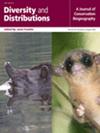Environmental and Biological Drivers of Fish Beta Diversity and Tropical River Conservation in Northern Australia
Abstract
Aim
This study examines how species traits and landscape features shape beta diversity in Northern Australia's freshwater fish communities, with implications for identifying high-conservation-value river basins.
Location
Northern Australia's freshwater ecosystems, covering 58 river basins draining into the Timor Sea, Arafura Sea, Gulf of Carpentaria, and Coral Sea.
Methods
We analysed four species-level traits—saltwater tolerance, body size, body shape, caudal throttle, and habitat use—to assess their influence on beta diversity at the river basin scale. Additionally, we examined five landscape features—basin area, elevation, terrain slope, ruggedness, and floodplain connectivity—using beta regression analysis to identify significant predictors of beta diversity.
Results
A total of 138 freshwater-associated fish species were recorded, including 76 freshwater-exclusive, 27 freshwater-brackish, and 35 diadromous species. Saltwater tolerance was a key driver of beta-diversity, with diadromous species showing higher Species Contribution to Beta Diversity (SCBD) values, indicating their role in connecting aquatic communities. Freshwater obligates contributed less to SCBD, highlighting their restricted distributions and endemism. Steeper, more rugged basins had higher species turnover, while floodplain connectivity did not homogenise fish communities as expected. Species-rich basins did not necessarily correspond to lower turnover, indicating unique assemblages, while high-nestedness basins were dominated by common species. Sites with intermediate nestedness and high alpha diversity act as biodiversity reservoirs.
Main Conclusions
Species traits and landscape complexity shape fish beta diversity in Northern Australia. Saltwater tolerance and topography strongly influence species distribution, while obligate freshwater species contribute significantly to regional diversity. Conservation strategies should prioritise basins with unique species compositions and biodiversity reservoirs, particularly the Daintree, Victoria, Daly, Finniss, and Roper rivers, to maintain ecological distinctiveness and resilience amid increasing development pressures.


 求助内容:
求助内容: 应助结果提醒方式:
应助结果提醒方式:


